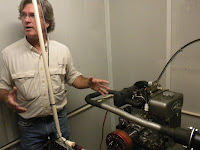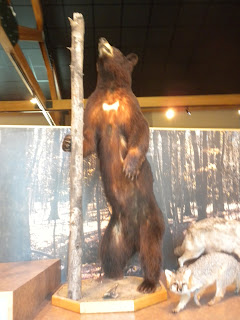It has been long time I did not post any document. It is now time to rock this summer with fun, joy, and to gain lot of new things. As, I was confused which class I could take this summer, I search all the departments and the courses offered by Arkansas State University. I was confused I had taken already "Journalism Seminar" last summer. So, my department (Department of Journalism) offers this time too Journalism Seminar. I was completely lost with other department subjects and courses they offered. But when I
knew from Dr. Gilbert Fowler, that journalism seminar which is offered in our department was "Agriculture Communication". I have heared about Development communication, Investigative Journalism, and bla..bla.. bla... But Agriculture Communication was new for me.
Then I came to know Dr. Fears is teaching that course. Then I was glad. It must be something new, some thing more intresting, and something more exciting. This solves my all confusion to take the course. I was glad. This was my fourth Class with Dr. Fears in my Masters Program.
Last two weeks ago I received an email from Dr. Fears, regarding some field visit and some tour related to agriculture. I was more excited. Then I was pretty much sure that this class will be more interesting, new, and fun class. MMMM!!! and This is Dr. Fears always. She teaches any courses so lightly, and so intrestingly, and she makes everything clear to student. Whenever I took class with her I never feel pressure. I always enjoy, I always learn something new in her class.
Today was the first day of my class. Early morning 5:00 am I woke up and went for morning walk with my sweet heart (Jeenu) and make my mind fresh. I reach the class 10 minutes earlier and meet some of new friend form Nigeria and Mississippi. We had really very diverse class. Some of them were from Mississippi, India, South Carolina, China and Me from Nepal. Oh!!! I am sorry I forget Azzz!!. He is from Saudi Arab.
When Dr. Fears handed the syllabus I directly jump the activities of class and see the different contents. I was glad. Even in the first day of the class I came to know about lot of facts about Arkansas, Texas and Mississippi. And the agriculture activities done at Arkansas. As, I read the course contents, there was field visit to Crowley's Ridge Nature Center by tomorrow. But unfortunately it was cancelled.

Whenever, Dr. Fears was talking about the agriculture in Arkansas, I was comparing the agriculture system in Nepal, with Arkansas agriculture. Nepal where more than 70% people depend their life in agriculture. (Agriculture in Nepal)
After going through all of the content in syllabus I was happy. There are some field trips, there are some guest speakers, and some watching documentaries.
I believe the must knowledgeable part of this class will be during field visit, while talking with some other people about the agriculture. How the media has view the agriculture at Arkansas. As, in our country most of the popular newspaper separates the pages for the agriculture. Is it the same here I am curious!!!!!!
In my opinion, this should be highly preferred in journalism or in mass media where people are highly dependable. I think in the United States also most of the people are dependent on agriculture. But I have never heard that journalists do investigation on agriculture, encourages people or the farmers to grow the products. Always whenever I see the news site there is either politics, either economics.
But many of people dont have idea that agriculture is most essential thing. And i bet there will be more viewers or readers if there is some agricultural news because most of the people are dependent on agriculture. Either in Nepal, or in China, or in India, Saudi, or in different other country agriculture is neglected by the media. But i am confuse either it is neglected or people give priority to politics.
Lets hope I could raise some questions on the coming up classes why we find less news regarding the agriculture in mass media rather than other areas as politics, economics, sports etc.

 Farm at Brookland, Arkansas. It is a farm company which manufactures Beef products. Honestly telling, I never eat beef, but I was
Farm at Brookland, Arkansas. It is a farm company which manufactures Beef products. Honestly telling, I never eat beef, but I was deeply interested what is different between the beef products that are found at Oka farm and other ordinary markets. In our culture we worship Cow as a symbol of mother. And we always respect the cow in Hindu religion. Despite that I went to know why people use the beef as their main products. Why not other cattle such as lamb, goat, chicken, or deer.
deeply interested what is different between the beef products that are found at Oka farm and other ordinary markets. In our culture we worship Cow as a symbol of mother. And we always respect the cow in Hindu religion. Despite that I went to know why people use the beef as their main products. Why not other cattle such as lamb, goat, chicken, or deer.

 and they deliver to home. If you could not find their beef product then you may visit to Farmers market at Arkansas State University.
and they deliver to home. If you could not find their beef product then you may visit to Farmers market at Arkansas State University.

































 Dr. Kevin Humphrey de
Dr. Kevin Humphrey de earch by Director of agricultural lab Dr. Humphrey a
earch by Director of agricultural lab Dr. Humphrey a

